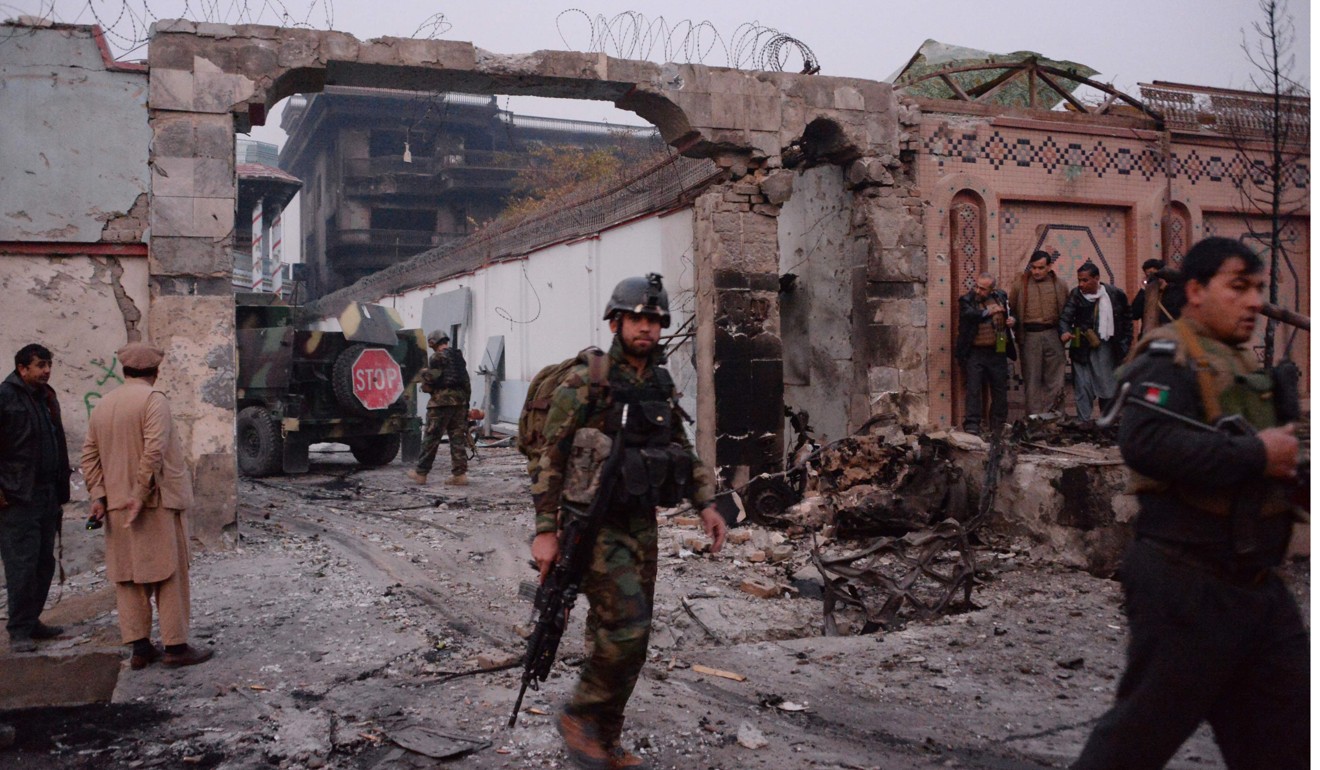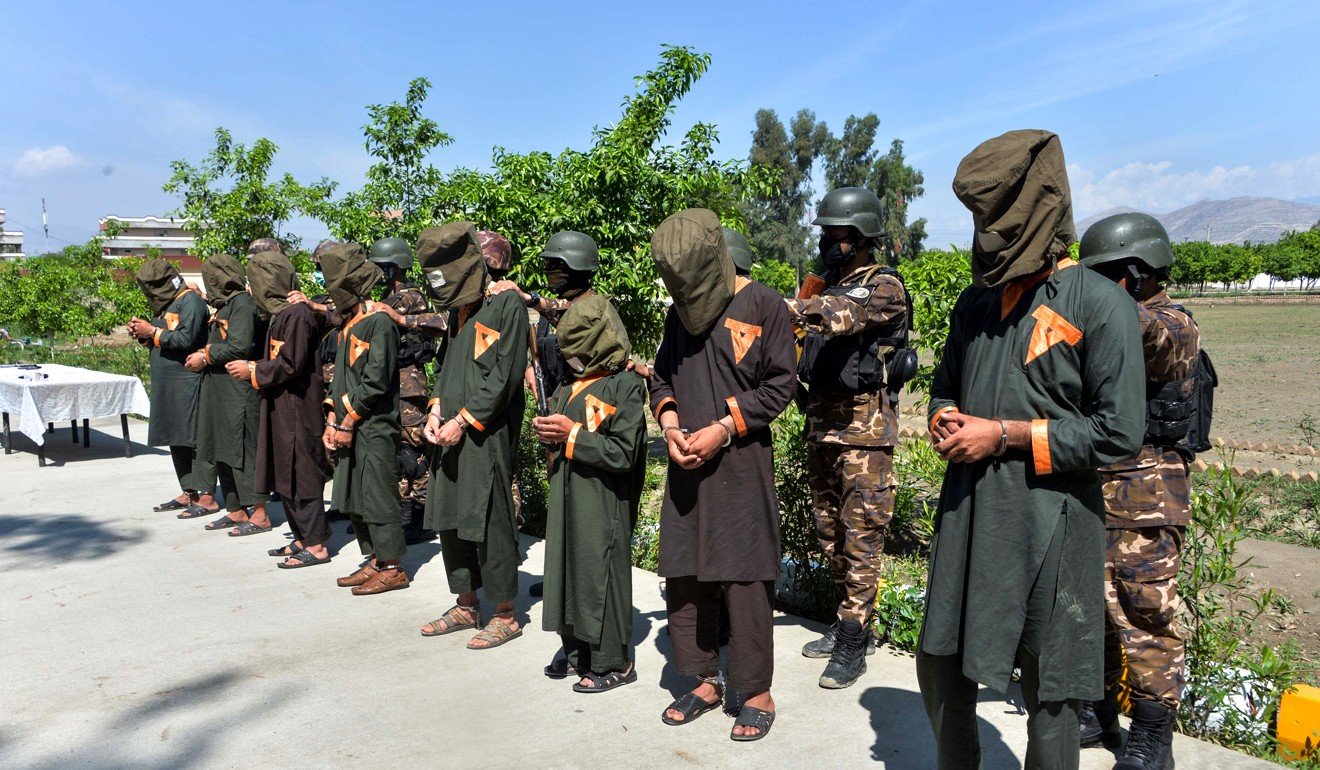
Islamic State plots world terror from mountain hideouts in Afghanistan
- US intelligence official said that a recent wave of attacks in Kabul were ‘practice runs’ for even bigger attacks in Europe and United States
- Number of fighters has grown from dozens to ‘thousands and thousands’
Islamic State has lost its caliphate in Syria and Iraq, but in the forbidding mountains of northeastern Afghanistan the group is expanding its footprint, recruiting new fighters and plotting attacks on the United States and other Western countries, according to US and Afghan security officials.
Nearly two decades after the US-led invasion, the extremist group is seen as an even greater threat than the Taliban because of its increasingly sophisticated military capabilities and its strategy of targeting civilians, both in Afghanistan and abroad. Concerns run so deep that many have come to see the Taliban, which has also clashed with Isis, as a potential partner in containing it.
A US intelligence official based in Afghanistan said that a recent wave of attacks in the capital Kabul were “practice runs” for even bigger attacks in Europe and the United States.
“That is their goal. It’s just a matter of time,” he said.
“It is very scary.”
32 killed in Tajik prison riot instigated by son of Islamic State’s dead ‘Minister of War’
Bruce Hoffman, director of the Centre for Security Studies at Georgetown University, sees Afghanistan as a possible new base for Isis now that it has been driven from Iraq and Syria.
“ISIS has invested a disproportionate amount of attention and resources in Afghanistan,” he said, pointing to “huge arms stockpiling” in the east.
The ISIS affiliate appeared in Afghanistan soon after the group’s core fighters swept across Syria and Iraq in the summer of 2014, carving out a self-styled caliphate, or Islamic empire, in around a third of both countries.

The ISIS affiliate initially numbered just a few dozen fighters, mainly Pakistani Taliban driven from their bases across the border and disgruntled Afghan Taliban attracted to ISIS’ more extreme ideology.
While the Taliban have confined their struggle to Afghanistan, the ISIS militants pledged allegiance to Abu Bakr al-Baghdadi, the reclusive leader of the group in the Middle East, and embraced his call for a worldwide jihad against non-Muslims.
Islamic State leader Abu Bakr al-Baghdadi says ‘long battle’ ahead as he appears in video for first time in five years
Within Afghanistan, Isis launched large-scale attacks on minority Shiites, who it views as apostates deserving of death.
Today it counts thousands of fighters, many from central Asia but also from Arab countries, Chechnya, India and Bangladesh, as well as ethnic Uygurs from China.
The group has long been based in the eastern Nangarhar province, a rugged region along the border with Pakistan, but has a strong presence in northern Afghanistan and of late has expanded into neighbouring Kunar province, where it could prove even harder to dislodge.

Ajmal Omar, a member of the Nangarhar provincial council, said ISIS now had a presence in four neighbouring provinces: Nangarhar, Nuristan, Kunar and Laghman, and that Kunar would soon replace the Middle East as ISIS’ centre of gravity.
The Taliban is talking peace, but Islamic State is wreaking havoc with suicide attacks in eastern Afghanistan
“When they began in Afghanistan they were maybe 150 Daesh, but today there are thousands and thousands,” he said referring to the group by its Arabic acronym.
The US intelligence official said: “I think expansion of territory in eastern Afghanistan is their number one military objective,” with the goal of eventually encircling Jalalabad.
During a visit to Kyrgyzstan last month, Russia’s Defence Minister Sergei Shoigu described Afghanistan as a “launch pad” for ISIS after the group was pushed out of Syria and Iraq.

Russia, like the United States, sees a peace agreement between the Taliban and the Afghan government as the best way of countering the threat posed by ISIS, and Moscow has held two rounds of informal talks involving the Taliban, government representatives and other prominent Afghans.
But as peace efforts have stumbled in recent months, Russia has turned to more lethal means of containing the threat.
‘American Taliban’ John Walker Lindh released after 17 years in federal prison as Afghan war still boils
Shoigu said Russia has sent heavy equipment, including helicopters and armoured vehicles, to Kyrgyz forces, and has boosted combat readiness in its bases in the former Soviet republics of Kyrgyzstan and Tajikistan.
Without an aggressive counterterrorism strategy, Afghanistan’s ISIS affiliate will be able to carry out a large-scale attack in the US or Europe within the next year, the US intelligence official said, adding that ISIS fighters captured in Afghanistan have been found to be in contact with fellow militants in other countries.
Authorities have also already made at least eight arrests in the United States linked to the ISIS affiliate in Afghanistan.
Martin Azizi-Yarand, the 18-year-old Texan who plotted a 2018 attack on a suburban mall, said he was inspired by ISIS and was preparing to join the affiliate in Afghanistan.
He was sentenced in April to 20 years in jail.
“During interrogation he said ‘this is my commander in Afghanistan and he is telling me what to do’,” he said.

